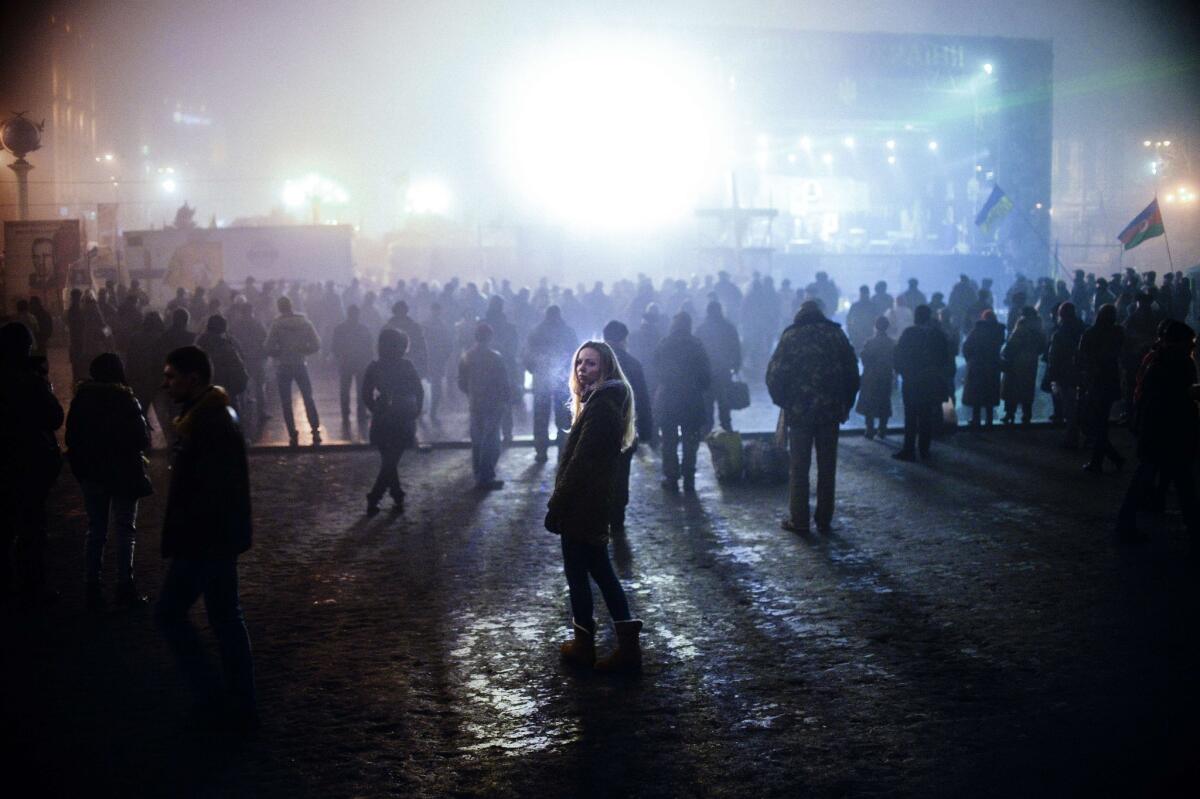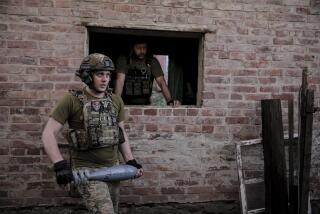The dawn of Cold War II

Here’s a chilly thought: We are seeing the dawn of a second Cold War between Russia and the West. But this one should be easier to manage than the first was.
The headlines over the last week have echoed the bad old days of the 20th century: Russian troops marching into someone else’s territory. Poland calling on NATO to help secure its borders. Americans and Russians trading angry charges at the United Nations.
But just as in the last Cold War, remaining calm is the starting point for strategy.
PHOTOS: A peek inside 5 doomed dictators’ opulent lifestyles
“The whole point of the Cold War was avoiding a direct military confrontation,” said John Lewis Gaddis of Yale, the dean of American historians of the era. “The whole story is one of respect for each side’s sphere of influence.”
“In 1956, [Soviet leader Nikita] Khrushchev did something that was far worse than anything Putin has done; he invaded Hungary and killed thousands of Hungarians,” Gaddis pointed out in a conversation Tuesday. “And what did [President] Eisenhower do? Absolutely nothing.”
Of course, there are big differences between the first Cold War and this one.
During the first one, the world was divided into hostile ideological alliances, and their leaders were willing to wage wars on their allies’ behalf in such places as Vietnam and Angola.
“Russia’s position isn’t comparable to the Soviet Union’s,” Gaddis noted. “We don’t have global alliances anymore.”
But there are also similarities.
The original Cold War was a long stare-down with a Soviet Union that sought to maintain a huge European empire, both to increase its own power and to serve as a buffer against the West. It ended once a Soviet leader recognized that his ossified economy could no longer compete and decided that the costs of holding the empire together exceeded the benefits.
This second, smaller Cold War is a stare-down with an autocratic Russia that would like to reassemble as much of the Soviet Union as it can, both for reasons of traditional Great Russian nationalism and as a buffer against what it sees as a hostile West. It may well end the same way; Russia’s kleptocratic economy floats on oil and gas earnings, but it can’t compete with, say, Poland or Estonia when it comes to real economic growth.
That’s why Ukraine’s economic association with the European Union was so threatening to Vladimir Putin; the more Ukraine’s economy became linked to the West, the less likely it became that Ukrainians would ever rejoin Russia.
Putin’s territorial ambitions shouldn’t have surprised anyone who was paying attention. “The collapse of the Soviet Union was the greatest geopolitical catastrophe of the century,” he said in a 2005 speech. “For the Russian people, it became a genuine tragedy. Tens of millions of our fellow citizens and countrymen found themselves beyond the fringes of Russian territory” — in neighboring republics like Ukraine, he meant.
So how should the U.S. navigate this second, more local version of the Cold War? For advice, I turned to George F. Kennan, the master diplomat who designed the “containment” strategy that guided nine U.S. presidents the first time around. (Kennan died in 2005, but he left a large body of writing — plus Gaddis, his biographer.)
Kennan often warned that Russians’ national assertiveness wasn’t solely a product of the Soviet Union’s communist ideology. “At [the] bottom of [the] Kremlin’s neurotic view of world affairs is [a] traditional and instinctive Russian sense of insecurity,” he wrote in his famous 1946 “Long Telegram” from the U.S. Embassy in Moscow to the State Department.
“Kennan would not have been surprised by Putin,” Gaddis told me. “Putin is exactly what he would have expected. What would have surprised him would have been if some kind of Scandinavian democrat had come to power in Moscow.”
But Kennan might have been torn over the crisis in Ukraine. “He was always unsympathetic to the idea of Ukrainian separatism,” Gaddis noted. “He was horrified when Ukraine declared independence in 1991, and always pessimistic about their capacity to sustain an independent Ukraine.” Kennan also opposed NATO expansion into Eastern Europe, a move that led Putin and other Russians to feel hemmed in by the West.
Kennan’s advice to American presidents dealing with Russia was consistent for decades: He argued that a patient strategy of opposing Soviet expansion through diplomatic and military pressure, leaving a “way open for a compliance not too detrimental to Russian prestige,” would eventually lead to the collapse of communism.
In 2000, after Putin came to power in post-communist Russia, Kennan’s advice was much the same. “Patience, patience — that’s what we need,” he told Strobe Talbott, then-President Clinton’s top advisor on Russia.
No American president would ignore Putin’s decision to occupy Crimea. But just as in the first Cold War, we still want to avoid a military collision with Russia — and we’d even like to cooperate, if possible, on problems like Iran. All of which suggests we should settle in, as Kennan would have advised, and try to play a patient long game.
Twitter: @DoyleMcManus
More to Read
A cure for the common opinion
Get thought-provoking perspectives with our weekly newsletter.
You may occasionally receive promotional content from the Los Angeles Times.










